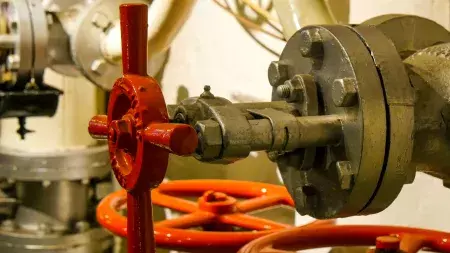
Corrosion coatings
Corrosion Resistant Coatings are used to protect metallic components from interaction with its environment which would otherwise cause degradation of the metallic material. Corrosion is a phenomenon that can arise through different mechanisms in severely different operational environments:
- Pitting Corrosion – localised corrosion phenomena that leads to cavities or pitting within the surface of a within a corroding material
- Crevice Corrosion – localised corrosion phenomena that occurs on a metal surface at, or immediately adjacent to, the gap or crevice between two joining surfaces
- Galvanic Corrosion – general corrosion phenomena that occurs when two dissimilar metals are immersed in a conductive solution and are electrically connected
- High Temperature Corrosion – general corrosion phenomena referring to oxidation or other chemical attack of metals and alloys at elevated temperatures
- High Temperature Oxidation – general corrosion phenomena is a scale-forming oxidation process in gaseous environments at elevated temperatures
- Hot Corrosion – general corrosion phenomena and a form of accelerated oxidation which affects the surfaces exposed to high-temperature gases contaminated with sulphur and alkali metal salts
Description
Corrosion Resistant Coatings are used to protect metallic components from interaction with its environment which would otherwise cause degradation of the metallic material. Corrosion is a phenomenon that can arise through different mechanisms in severely different operational environments:
- Pitting Corrosion – localised corrosion phenomena that leads to cavities or pitting within the surface of a within a corroding material
- Crevice Corrosion – localised corrosion phenomena that occurs on a metal surface at, or immediately adjacent to, the gap or crevice between two joining surfaces
- Galvanic Corrosion – general corrosion phenomena that occurs when two dissimilar metals are immersed in a conductive solution and are electrically connected
- High Temperature Corrosion – general corrosion phenomena referring to oxidation or other chemical attack of metals and alloys at elevated temperatures
- High Temperature Oxidation – general corrosion phenomena is a scale-forming oxidation process in gaseous environments at elevated temperatures
- Hot Corrosion – general corrosion phenomena and a form of accelerated oxidation which affects the surfaces exposed to high-temperature gases contaminated with sulphur and alkali metal salts
Applications
The Castolin Eutectic Workshop in Newcastle applies range of thermal spray and slurry materials to protect critical components against different forms of corrosion:
- MoniPlex®, Cr2C3-NiCr, WC-Co, WC-CoCr, Al2O3, Al2O3-TiO2, Cr2O3, Cobalt Alloys, Nickel Alloys, TSA. Other materials available upon request
The requirement for corrosion resistant coatings permeates most industry sectors, where the list of applications that utilise corrosion resistant coatings is virtually endless. The application of coatings that protect against corrosion often protect against other failure modes including wear and erosion. A range of different applications across different industrial sectors that are subject are summarised:
- Aerospace - Combustor Components, Transition Liners, Blades, Vanes, Nozzles
- Industrial Gas Turbine - Combustor Components, Transition Liners, Blades, Vanes, Nozzles
- Oil & Gas – Radial Bearing, Mud Rotors, Mandrels, Piston Rods, Sleeves, Antennas, Torquers, Drilling Tools, Shafts, Mud Pump Plungers, Pins, Christmas Tree Components, BOPs, Riser Systems, Valve Casing, Butterfly Valve Discs, Balls, Plugs, Seats, Choke, Orifice Plates, Guides, Rings, Stems, Pump Casing, Pump Plungers, Rotors, Impellers, Hydraulic Cylinders, Fin Fan Heat Exchangers, Ducting & Pipework, Storage Tanks

